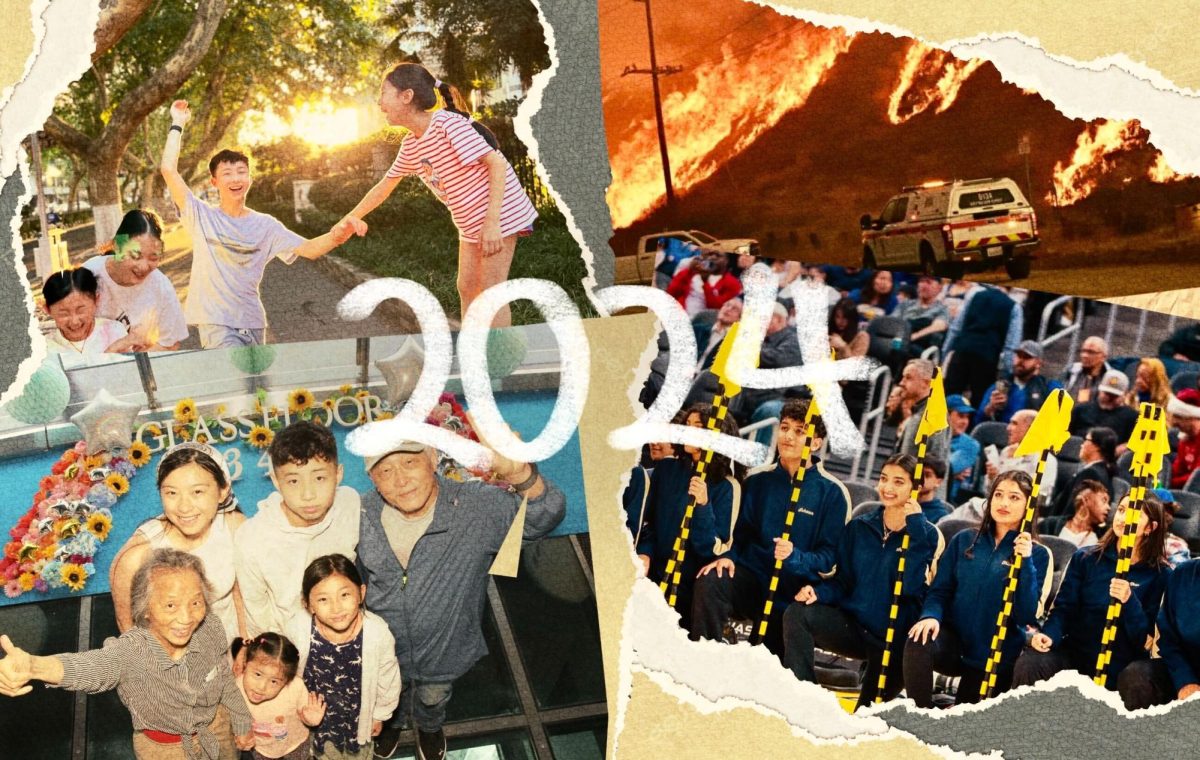The HAmLit Film Club
American Literature Honors teachers and students participate in an optional film analysis outside of class
June 10, 2021
During distance learning, American Literature Honors (HAmLit) students had the option of attending meetings after Advisory in a literary Film Club, where they could discuss a selected film that they watched on their own time. While the HAmLit curriculum has included the film analysis of the movie “Moonlight” in recent years during the class’ Queer Theory unit, this is the first time teachers have introduced additional films. In the club, students discussed movies such as “Get Out,” “Parasite” and “Us” and their connections to units like Critical Race Theory, Marxist Theory and more.
According to English teacher Vennessa Nava, one of the organizers of the optional Film Club, having students discuss films outside of class was a way to mitigate the issue of less class time during remote learning.
“We thought that if we started [film analysis] earlier, we could get students that participate more acclimated to examining and critically viewing films, because once you start to develop that faculty, [and] then you go and you watch things, suddenly you become a naturally more critical viewer and more analytical,” Nava said. “You start [to] notice the intentionality of [films] as a work of art, and [you start] to communicate certain things. And so we thought that if there’s students that want to engage in this continually, by the time we get to the in-class ‘Moonlight’ analysis, then that would just be a benefit to those students.”
Nava says that films were selected because she believed students would be more naturally inclined to engage in the visual and auditory experience of a movie rather than text, which is the primary type of work analyzed in the class.
Junior Sophia Bokovikova took part in the discussions about “Us” and “Get Out.”
“I think the films we’ve seen are not … explicitly about one single [topic], so that I think differs from the types of reading that you might do in class,” Bokovikova said. “[For] the films, you really have to analyze [them] and think deeper in there, so it really challenges you.”
All three films classify under the genres of horror or thriller, which Nava reveals was a complete coincidence.
“I don’t know what the deal is, but horror seems to really reflect some of the critical things we’ve been looking at,” Nava said. “And those movies have been so popular and so well made, and so perfectly attuned to the moment in American society right now.”
Junior Lavi Sundar, who attended all three film discussions, says she and her friends already enjoy discussing literary analysis with each other outside of class, and she believed that opting into the discussions would be a larger scale extension of that.
“I really liked ‘Get Out,’ mainly because [we discussed] it in tandem with our Critical Race Theory lens discussions as well, so I felt like I had a little bit more of a footing, some more things to talk about specifically,” Sundar said. “And also just the entire movie is such a masterpiece. Everything from the score to the dialogue to the first 20 seconds of it can be very carefully and critically analyzed, which is amazing.”
During discussions, Sundar recalls noticing connections between “Citizen: An American Lyric” and the movie “Get Out.” She says these analytical discussions broadened her understanding of issues outside of Cupertino.
“In our Cupertino bubble, we’re very homogenous here, so we aren’t very educated on other perspectives, other parts of history and other components of that until we’re in high school,” Sundar said. “I think this was a really good educational experience for me in regards to the unit as well because it opened my eyes to modern racial dynamics and insidious ways that racism can manifest itself.”
According to Sundar, the depth of analysis from her classmates consistently “blew her off her feet” throughout the post-viewing discussions, which she believes are very productive. Similarly, Bokovikova feels participating in the discussions added to her overall experience of the film, especially in ones she has already seen such as “Us.”
“I came to a completely different understanding of ‘Us,’ after rewatching it and noticing things that I hadn’t before,” Bokovikova said. “So it was cool to see how the meaning of the film can change so much just based on knowledge that you pick up in class.”

As an avid TV watcher, Sundar believes that the Film Club content has given her the skills to critically engage with what she sees at home as well. Unlike Bokovikova, Sundar hadn’t viewed any of the films beforehand.
“On one hand, I could go straight in without any preconceptions and just form my very own opinion of [the movies] without other opinions swaying what I thought about [them],” Sundar said. “But on the other side, I feel like all analysis is kind of bolstered and supported if you know enough context about the origin of the text, about the life of the author, things like that.”
Even though the discussions were optional and not for credit, Nava found students’ comments to be “rich and organic” nonetheless. Sundar agrees and even goes on to say that the lack of credit assigned to the Film Club made it a “no pressure environment” where she wasn’t afraid of embarrassing herself and could share her true thoughts without reservation. The overall atmosphere of the Film Club was something that both Sundar and Bokovikova found to be an enriching experience.
“For me, the biggest takeaway was that the issues that we learn about in class are… one, they’re very relevant to our lives and two, that they’re deeply rooted in almost everything and can be found in everything around us,” Bokovikova said. “And it’s very interesting to either watch a movie for the first time or rewatch it with this gained understanding and see it in a completely different way and find all these different pieces of how this is actually a system of oppression, or this is a life experience that someone has and how it’s all integrated in [the film].”
Even once remote learning draws to an end, Nava would like to continue Film Club as an option for students in American Literature Honors classes to join, and would like for attendees to bring their friends for more perspectives.
“I’m open [to adding more content] because I think there’s always interesting films coming out, and I think that another joy of teaching is when I see something new that’s come out and I recognize [that] this could be really useful if we bring it under academic scrutiny or we do some interpretation with it,” Nava said. “I’d be pretty open to new things that come out or student suggestions, especially if there’s a kind of genuine interest in the part of students to engage with those materials.”




























